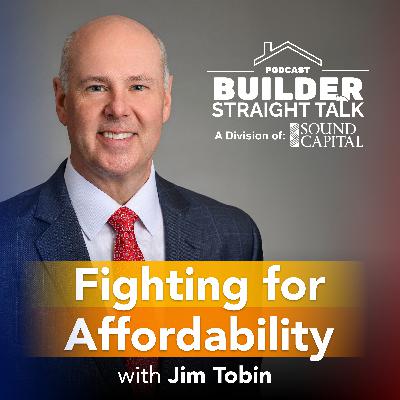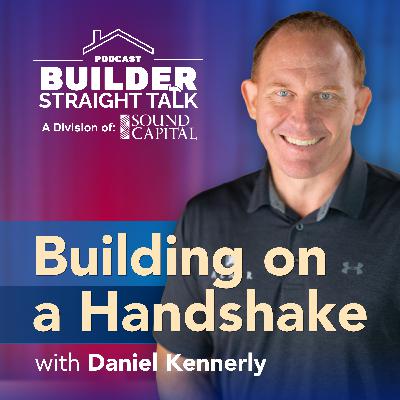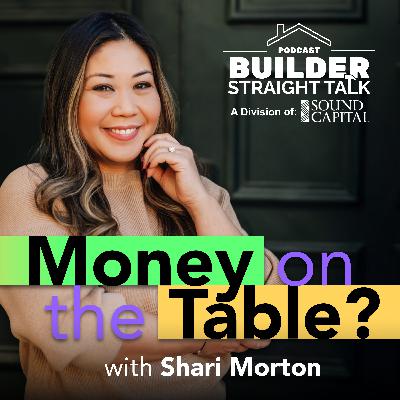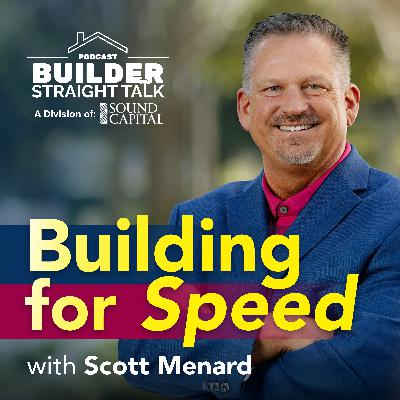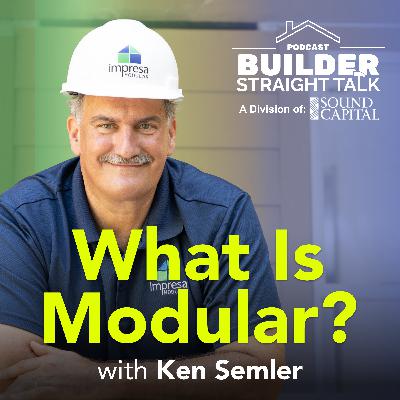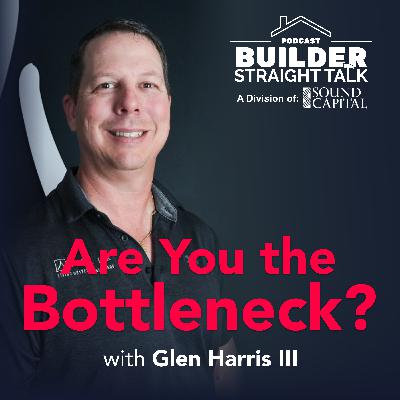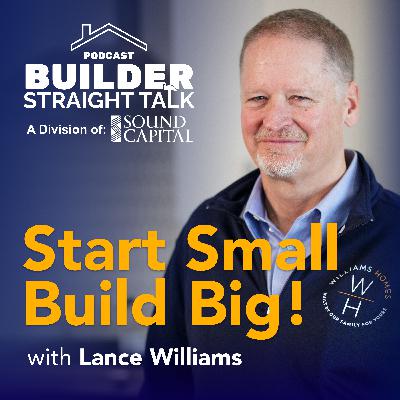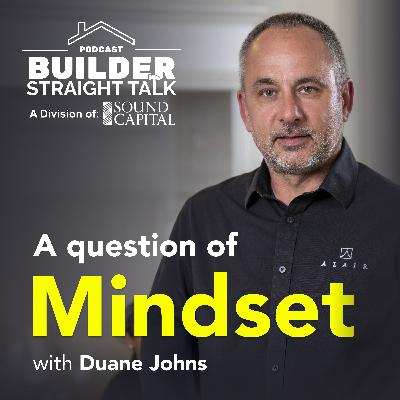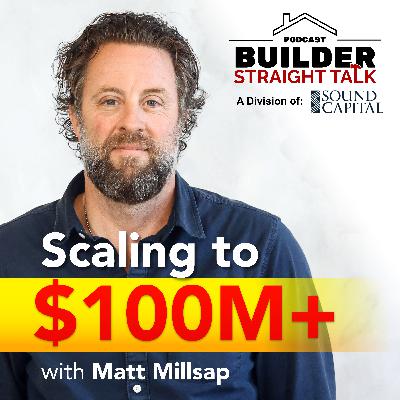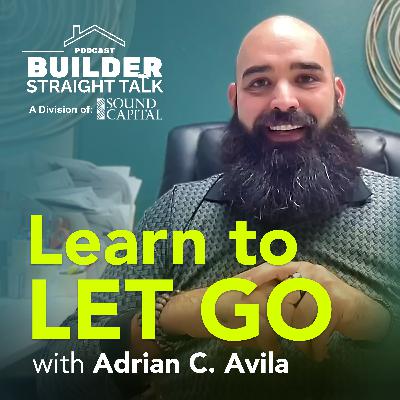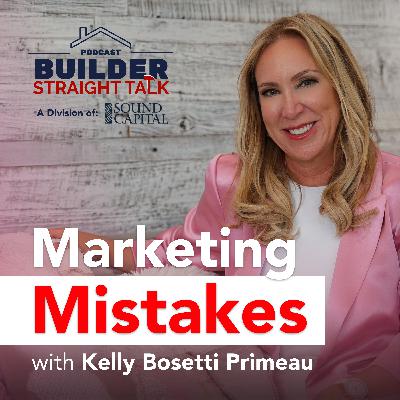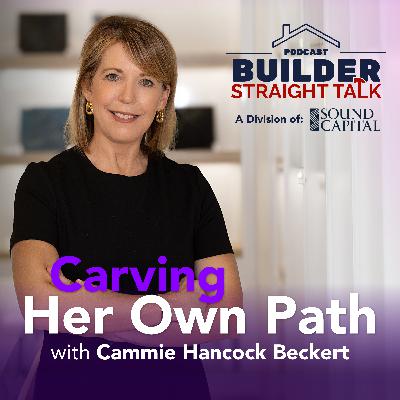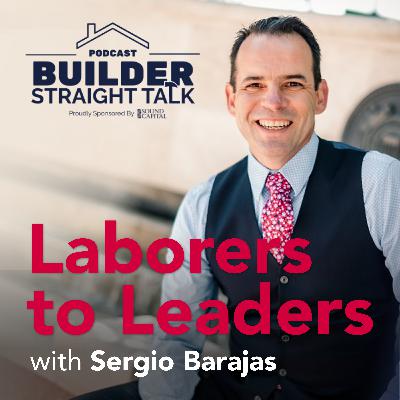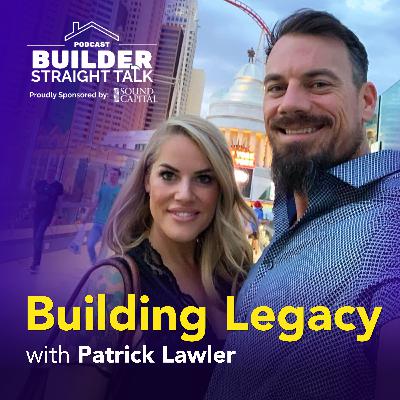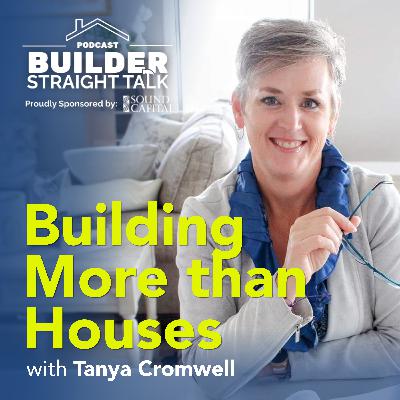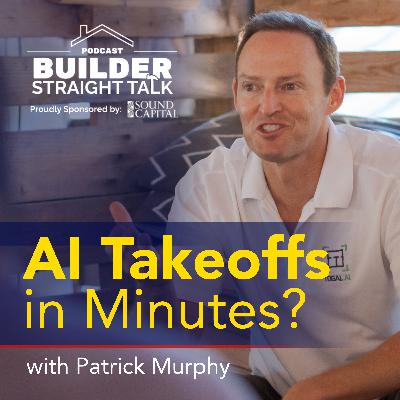Housing, Policy, and the Fight for Affordability with Jim Tobin
Description
Jim Tobin never set out to spend 27 years at the National Association of Home Builders. He wanted to fly helicopters like his dad photographed at Sikorsky Aircraft. Then politics caught his attention, and he found himself on Capitol Hill in 1995, thinking he'd become a defense lobbyist selling guns and things that go boom. Instead, he landed at NAHB and discovered something better: an industry that builds shelter, creates wealth, and gives families a shot at the American dream.
Now as President and CEO of NAHB, Jim spends his time doing something most association heads don't: actually visiting builders. Not the big production guys with their own lobbyists, but the local chapters in San Antonio, Shawnee, and Iowa. He sits with the builders doing five homes a year, the ones dealing with permitting headaches and code changes and trying to figure out how to keep prices reasonable for buyers who are already stretched thin.
"I can't do my job here in Washington, in the press or in other parts of the country, if I don't hear what's going on in all those different markets. The builders are all facing the same issues. Degrees and difficulties are different, but the same issues. And I want them to be able to touch and feel NAHB to know that we're there to support them."
The conversation turns to what's keeping builders up at night, and Jim doesn't sugarcoat it. Interest rates that were supposed to drop haven't dropped enough. Uncertainty around tariffs and policy has builders pumping the brakes. The building year that was supposed to be flat is actually down 7 percent. The challenge, as Jim sees it, is that while everyone in government expresses strong support for more housing, the policies don't always align with that goal in terms of affordability.
Take the FHA energy code issue. The Biden administration decided any home sold to an FHA borrower had to meet the 2021 International Energy Conservation Code. Sounds reasonable until you realize only five or six states were actually on that code. Every other state would have to build to two different codes depending on who's buying. And the cost? Between 20,000 and 30,000 dollars per home in some markets. Kansas City builders can show you the same model house built across the street under different codes with a 30,000 dollar difference.
"It's an unforced error. The Biden administration was absolutely about building more homes and making housing affordable. Yet they do something like this despite all of our protestations. This is about adding cost. They chose to believe that it would be better to save people 10 dollars a month on their energy bill, but it's okay to pay 20,000 dollars more for the cost of that house. We don't agree with that premise at all."
Here's the challenge Jim sees with this approach: FHA borrowers are first-time buyers, first-generation homeowners, people who need that federal backstop to get in the door. Adding tens of thousands of dollars to their house price to save them maybe ten bucks a month on their energy bill creates a difficult tradeoff. When they can't afford the new home, they often end up buying an older, less efficient one anyway, which doesn't serve the intended environmental goals.
Jim points out something most people miss. There are 900,000 new homes being built this year, and they're already the most energy efficient homes in the country. But there are 130 million older homes out there, most built before 2000.
"If you really want, if you really care about energy efficiency in the built environment, then you have to tackle the problem of the existing housing. Stop trying to wring the neck of 900,000 homes and solve the problem of 130 million homes. Because all you're doing is making ownership and supply harder and harder, and you're pushing people to older, less efficient homes."
The conversation shifts to how local governments face a similar tension. Raising property taxes on existing homeowners is politically difficult because those people vote. Instead, impact fees and permitting costs get added to new construction, where there isn't a voter in that house yet. The builder absorbs these costs initially but ultimately passes them to the buyer, which can push homes into higher price brackets that put them out of reach for many families.
"It's a lot easier to go tax new construction through impact fees, permitting fees, extractions, because there isn't a voter in that house yet. And they also know that's the way they can stick it to people in the early days by raising the cost of new construction."
Michael raises the question of whether these dynamics might be creating a generation of renters who struggle to build wealth through homeownership. Jim acknowledges there are some who prefer higher-density development near transit, but he thinks much of the challenge comes from competing priorities rather than intentional policy. Either way, the outcome is concerning. There are a million kids in their home-buying years living with their parents right now because they can't find an affordable apartment or house.
"Home ownership is the gateway to the middle class in this country, and we are pushing home ownership farther and farther away from the next generation. The more we do that, the harder it is for them to build equity, build real wealth in this country. The housing crisis has catastrophic downstream effects that we have not felt yet for the next generations behind us."
The role of trade associations comes up, and Jim's answer is simple. You owe it to your business and your family to be part of the network. Not for politics, though that matters. But for the knowledge transfer that happens when two builders sit down at a monthly meeting and one says, "Here's how I solved that problem." The collective brain of builders, code experts, and legal resources waiting to help you navigate whatever comes next.
"I promise you, advocacy is coming for you, and government is coming for you. I get asked this question all the time on Capitol Hill: what's the one thing we could do for the home builders? The one thing you do is get out of our way. Stop putting roadblocks in front of us. We don't ask for anything. We don't want any government help. All we want to do is be left alone to do what we do better than anybody else. And that's build shelter in this country."
Then there's the workforce challenge. Since the 1970s, America has emphasized the four-year college degree as the path to success. The trades became undervalued, and by the time people realized the gap, there was a shortage of skilled workers to build what the country needs. Jim borrows a line from a past NAHB chairman: maybe we should start saying Jimmy couldn't make it as a plumber, so he had to go get a college degree. That's the mindset shift needed.
"Learn a trade, get hired, you're making a good buck. After a few years, you start your own company. Now you're tomorrow's entrepreneur. You're going to hire a few more employees, then a few more crews, and then you're going to be on a bass boat sitting in the middle of the lake. You've got four or five trucks out on the road doing good work. That's the arc of what trades can give you in this country."
The International Builder Show comes up as the place to see what's happening. Education, networking, and the latest building products. This year's New American Home in Orlando has an underground parking garage with a carousel to turn your car around and a multi-story rack for vehicle storage. Over the top, sure, but it shows what's possible. Better yet, the builder is matching every product donation with his own money to build housing for people with autism, including his son.
Jim closes with something that clearly matters to him. Lobbying gets a bad reputation, like everyone's walking around with bags of money buying votes. But it's protected by the First Amendment. The freedom to assemble, to petition your government. Builders can't all fly to Washington or their state capital, so associations do it for them.
"I give voice to those who cannot, and I carry a message for people who cannot, and that is protected by the Constitution. You may not like what I'm selling, but I absolutely despise your questioning my right to do it."
The through-line in all of this? Jim believes housing should be the priority. The question he keeps coming back to is how to balance important goals like energy efficiency and community planning with the fundamental need to make homeownership accessible. The builders are ready to build. The question is whether policy can catch up to make it economically viable for the families who need it most.
Jim Tobin, CAE, president and chief executive officer of the National Association of Home Builders (NAHB), has more than 20 years of association experience and a diverse housing policy background.
Tobin's tenure at NAHB began in 1998 as a Congressional representative for the western United States, and he quickly broadened his policy expertise to the environmental and tax policy arenas. Most recently, Tobin served at the association's executive vice president and chief lobbyist, responsible for directing the federal, state and local lobbying, as well as political activities for NAHB. He was promoted to president and CEO in June 2023.
Prior to joining NAHB, Tobin served as senior legislative assistant to former U.S. Representative Frank Riggs (Calif.) and former U.S. Representative Gary Franks (Conn.).
Tobin holds a Bachelor of Arts in political science from the University of Connecticut. He lives in Falls Church, Va., with his wife and their two children.
NAHB Blog: https://www.nahb.org/blog
NAHB Podcast:
<a href="https://www.you

